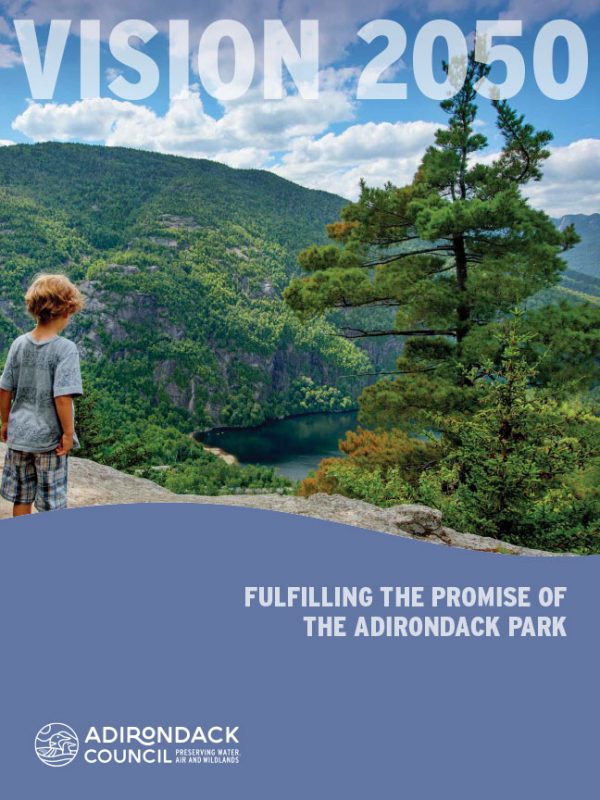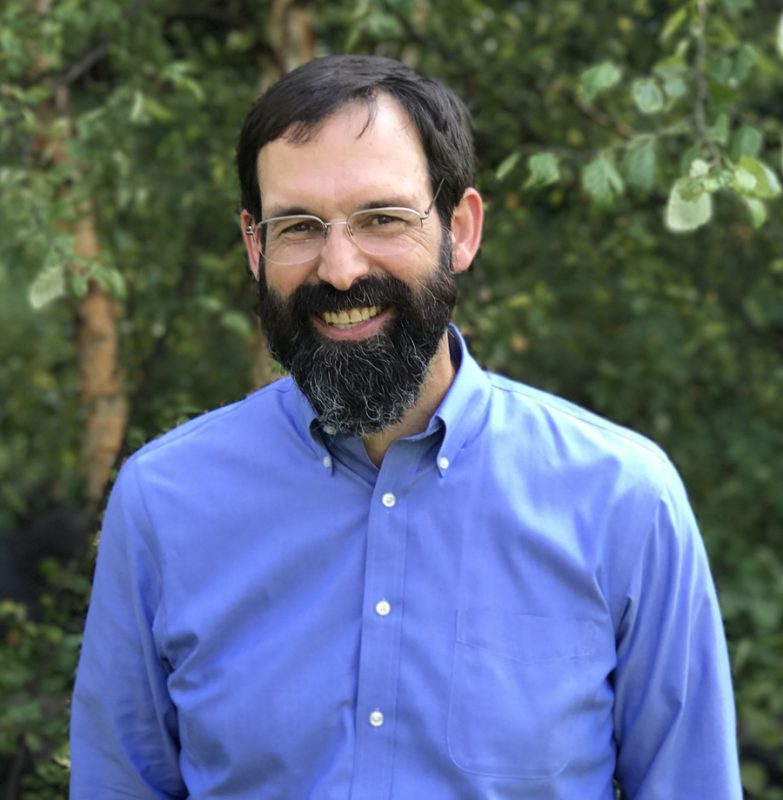I wrote the following article for the Adirondack Explorer newspaper, reporting on a new 30-year vision plan for the six-million-acre Adirondack Park, researched and written by the Adirondack Council. Below the article is a link to where the article resides on the newspaper’s website.
*****
Mapping a vision
November 16, 2021

Adirondack Council plots journey to improved park management and communities
By Mark A. Marchand
Building on a 129-year-old promise to protect and nurture the Adirondack Park, the Adirondack Council on Tuesday unveiled a comprehensive roadmap for the next 30 years.
In a 98-page document, “Adirondack VISION 2050,” the Elizabethtown-based group establishes a “North Star” to guide efforts of park advocates and others, according to plan authors and the wide range of collaborators and experts involved in developing the report.
“The time to do this is now,” said council Executive Director William Janeway. “Only twice in the park’s history has this type of comprehensive discussion about long-range planning and protection taken place—first when the initial legal protections were put in place when the park was created in the late 1800s and then about 50 years ago. Failure to consider how we move forward now, given all the threats facing the park, is abject failure.”

Released online, the new vision focuses on three primary missions developed by an organization created in 1975 to ensure the ecological integrity and wild character of the Adirondacks. The plan focuses on developing the park’s natural communities or ecosystems, fostering vibrant local communities, and improving park management.
The report spells out 18 different paths and some 240 specific recommendations. Adirondack VISION 2050 also picks up where the council’s first long-range plan—2020 VISION: Fulfilling the Promise of the Adirondack Park—left off. That 30-year vision document was launched in 1990 and updated several times.
The 2020 vision
Janeway cited accomplishments achieved under the 2020 vision as a solid foundation for proceeding with the new framework. More than half of the over 900,000 acres the council and scientists recommended for protection from subdivisions and development in the 1980s have some sort of permanent protection now, he explained. And two of every three acres protected in the Adirondack Park since the first VISION 2020 reports came out in the late 1980s were consistent with the recommendations, he added.
“Given the sometimes-opportunistic nature of land protection, this is a remarkable finding that reinforces how good collaboration and science can drive effective water and wildland protection,” he said.
In designing the new vision, the council’s directors, who include Adirondack Explorer Chairman Thomas Curley, enlisted experts, scientists, and others to look into pressures on the natural and human systems in the park created by climate change, air and water pollution, invasive species, economic forces, and inadequate, underfunded management. In addition to existing and potential impacts from climate change, the massive forests spread throughout the park serve as a significant resource for sequestering the carbon at the root of atmospheric heating.
Three areas of focus
The council cites lack of a comprehensive capacity to conduct research and monitoring on a parkwide scale. The organization calls for making ecological integrity and wild character a greater priority for park managers. It also recommends a reimagined and adequately staffed and funded Adirondack Park Agency. Other recommendations include greater monitoring, research and science, independent funding, and restoration of some degraded wild lands—also known as rewilding.
To foster vibrant human communities, the report suggests more resources for communities within the park to thrive economically and demographically and fit the character of the region. The roadmap recommends building more diverse, welcoming, and safe societies, seeking aid from the state and elsewhere to plan and build infrastructure to support communities, and elevating the importance of education for schools, workforce development, visitor interpretation, and local history.
The 2050 vision for managing the park points to current weaknesses because of the collection of disparate units. The plan aspires to a more holistic approach. Many state agencies, for example, divide the park into regions and manage it piecemeal. This hinders efforts to treat the park as a whole. Recommendations include strengthening and restructuring governance, creating dedicated funding sources, and developing a structure to ensure adequate scientific research and monitoring are conducted.
The process and ultimate goal
To develop its comprehensive vision, the council and report authors sought and received input from over 100 experts.
“The strength of the Adirondack Vision 2050 is from the myriad community leaders, government officials, scientists, advocates, and other stakeholders who engaged with the project,” said Julia Goren, project director. “While their voices and perspectives were diverse, all influenced and inspired the final project.”
Janeway said that while release of the vision document today, available here, is a culmination of an intensive research and writing process, he views this step as a catalyst for a new beginning.
“This is not the conclusion,” he said. “It’s our expectation that tomorrow begins anew a discussion of how we protect this precious park.”
He said the status quo isn’t enough to protect the Adirondacks. “ It’s a red flag moment,” he said. “The time available is short.”
Mark Marchand is a writer, book author, and adjunct professor in the Journalism Program at the University at Albany. He often writes or blogs about science, the environment, climate change, and the art of communication. markmarchand-upstateny.com
Link to story on newspaper website.
